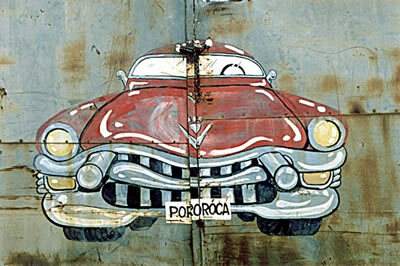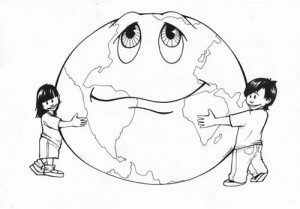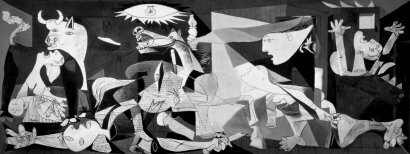Characteristics Of Pop Art
Art / / July 04, 2021
Pop art is an artistic movement that began in the 1950s, first in England and later in the United States; it was an artistic reaction that was opposed to Abstract Expressionism, which was the mainstream in art at the time.
This current enhances aspects of the daily life in which they live, making them integral and constant parts within their works, aspects such as characters in the show or politics, which at the time entered into people's daily lives, as well as simple and common objects, such as cans, bottles or packaging of some famous product or widely disseminated, which belonged to popular culture, and the constant use of advertising and comics, as well as various inspirational objects based on urban culture and popular, making them integral parts of multiple artistic expressions, among which stood out a very marked use of collages as a means of exposing ideas or emotions of the artist.
This trend began in England in 1952, thanks to a group of young artists, including Painters, sculptors, architects, and writers were unhappy with the mainstream at that time in the art. Some members of this group of artists were interested in urban culture and everyday life, especially in fields of mass production, such as advertising, pop music, comics and others. fields, making of them use and inspiration for his works, later being the maximum exponent of him the American artist Andy Warhol (Andrew Warhola, Jr), a character who influenced at the same time in the diffusion of this movement, especially in the decade of the 60s and later years, surpassing in fame other artists of the movement, such as Paolozzi Hamilton himself, who was the founder of the same. Hockney, Derek Boshier, Allen Jones, R.B. Kitaj and Peter Phillips.

Characteristics of pop art:
Opposition to the preceding movements.- This artistic movement is opposed in many aspects to the prevailing movements during the first half of the 20th century, such as abstract expressionism and some currents of modernism.
Figurative language.- One of the most notable characteristics is the use of figurative language, especially through the use of themes that reflect the consumer society.
Excessive use of collage.- The use of collage is very frequent within the works of this current, commonly using clippings from magazines, newspapers, books, photographs, various advertisements, etc. An example of this is the collage by the artist Eduardo Paolozzi entitled Bunk, or the work of Richard Hamilton, entitled "Just What Is It That Makes Today’s Homes So Different, So Appealing?" ("What is it that makes today's homes so different, so attractive?"), the latter being one of the reference works of this artistic trend.
Frequent use of eroticism and the nude. It is common to find in the works of this current, the use of nudes or erotic scenes, revolts or hidden among a multiplicity of images, Among which stand out posters, brochures or photographs of advertisements and advertisements, the introduction of the word "pop" is frequent among the plays. Sometimes photos of naked or semi-naked people appear, between images of household or everyday appliances, as well as images from "comics", movies, or animations. Regarding the inspiration in animations and comics (specifically Japanese comics called Mangas), they are more noticeable in authors such as the Japanese Takashi Murakami or Yoshitomo Nara, who in their most up-to-date version of pop art, have printed many vestiges of that nature, being common in his works, (especially in the plastic of Takashi Murakami,) the nude and eroticism taken to levels lush.
Use of advertising and everyday objects in the works.- It is frequent both in painting and in photography and sculpture, the exhibition of posters or advertisements, as an expression of the art of urban everyday life in which one lives. An example of this is Andy Warhol's work "32 cans of Cambell soup", and the various works in which everyday products and utensils were frequently used, such as magazines, lamps, irons, cleaning products, tools, cigarettes, comics, or soda bottles, as well as appliances such as vacuum cleaners, refrigerators, automobiles, radios, and televisions.
Inspiration from famous people.- Another source of inspiration that this trend exploited was the use of the image of famous people of the moment in their works, characters like Marilyn Monroe, jone F Kennedy, Mao Tse Tung, (Mao Zedong), or more recently Michel Jackson, among others, making use of multicolored combinations interspersed in the pictures, or by combining character images with well-known works of art, like putting Marilyn Monroe's face on the statue of liberty and stuff Similar. This was one of the aspects most used by Andy Warhol, being some of the most exponential and well-known works of the entire movement.
Pop Art today.- Pop art during its early years, predominated in countries such as England and the USA, later spreading to Europe and some countries in Latin America and Asia, although in reduced sectors. Among the aspects of this current, the currents that reached countries such as Japan, where pop art has been established, thanks among other things to pop music, should be highlighted. manga (Japanese comic), anime, and has taken on its own nuances such as the combination with particular styles of drawing and painting of traditional Japanese art, and the profuse and repetitive use of some types of images, as can be seen in the works of Takashi Murakami, where images of smiling flowers and skulls predominate among a variety of pictorial images. So also this current in particular, is inspired by concepts such as Japanese anime called hentai, in several of his works, as can be seen in the plastic works of his own Murakami. An example of this are the plastic works "My lomesome cowboy" and Hiropan ", where the nude and eroticism are exaggerated with exuberant and grotesque overtones.



